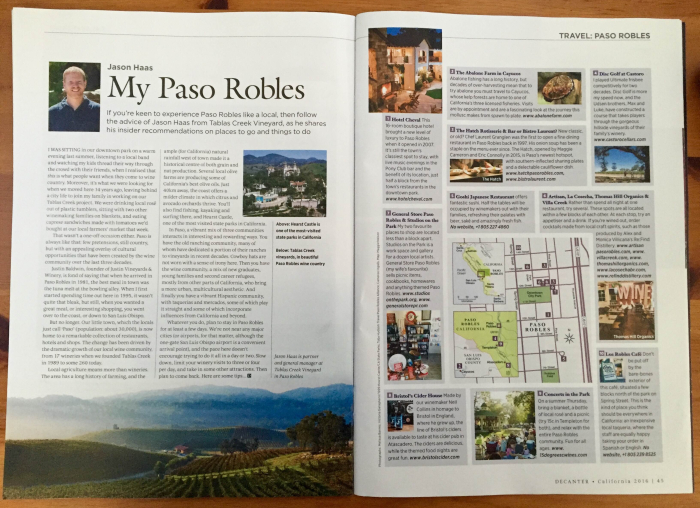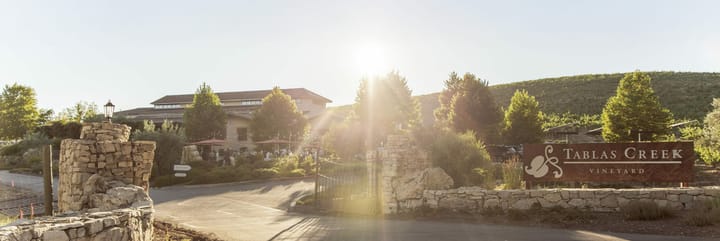Outtakes from my Decanter "My Paso Robles" article
Earlier this year, I was flattered to be asked by Decanter Magazine to write an insider's guide to Paso Robles for inclusion in their annual California supplement. My goal was not to recommend wineries, but instead to give potential visitors an idea of some of the other gems of the area: things to do that you might not know about, or that might not appear in a guide book. What fun. The article was published last month:

Unfortunately, it isn't available online. So, I wanted to share it here. This also gives me the opportunity to provide some additional details on my recommendations that weren't able to fit into the magazine due to space constraints. So, here goes:
I was sitting in our downtown park last summer on a warm Thursday evening, listening to a local band play and watching my kids thread their way through the crowd with their friends, when I realized that this is what people look for when they come to wine country, and more than that, what we were looking for when we moved out fourteen years ago from a city life to join my family in working on our Tablas Creek project. We were drinking local rosé out of plastic tumblers, sitting with two other winemaking families on blankets, and eating caprese sandwiches from tomatoes we’d gotten at our local farmer’s market that week. And it’s not just that concert series. Paso is like that: few pretensions, still country, but with an appealing overlay of cultural opportunities brought by the wine community over the last three decades.
Justin Baldwin, the founder of the pioneering Justin Winery, is fond of saying that when he arrived in Paso Robles in 1983, the best meal in town was the tuna melt at the bowling alley. When I first started spending time out here in 1995, it wasn't quite that bleak, but still, when you wanted a great meal, or interesting shopping, you went over to the coast, or down to San Luis Obispo. No more. Our little town, which locals just call "Paso" (population, about 30,000), is now home to a remarkable collection of restaurants, hotels, and shops, driven by the dramatic growth of our local wine community, from 17 wineries when we started Tablas Creek in 1989 to some 260 today.
Local agriculture means more than wineries. The area has a long history of ranching, and the ample (for California) natural rainfall west of town made it a historical centre of both grain and nut production. Several local olive ranches are producing some of California's best olive oils. Just 20 miles away, the coast offers fishing, kayaking and surfing, a milder climate in which citrus and avocado orchards thrive, and Hearst Castle, the most visited state park in California.
In Paso, you have a vibrant mix of three communities, which interact in interesting and rewarding ways. You have the old ranching community, many of whose members have in recent decades dedicated a portion of their ranches to vineyards. Cowboy hats here are not worn ironically. You have the wine community, which has attracted a mix of new graduates, young families, and second career refugees into the area from (mostly) other parts of California, bringing a more urban, multicultural aesthetic. And you have a vibrant Hispanic community, both first and second generation, with taquerias and mercados, some of which play it straight and some of which incorporate influences from California and beyond.
Whatever you do, plan to stay for at least a few days. We're not near any major cities (or airports, for that matter, although the one-gate San Luis Obispo airport makes for a convenient arrival point) and the pace here isn't one where you should try to do it all in a day or two. Slow down, limit your winery visits to 3 or 4 per day, and take in some other attractions. And then plan to come back.
So, that's my Paso. What are the can't miss stops in yours?

